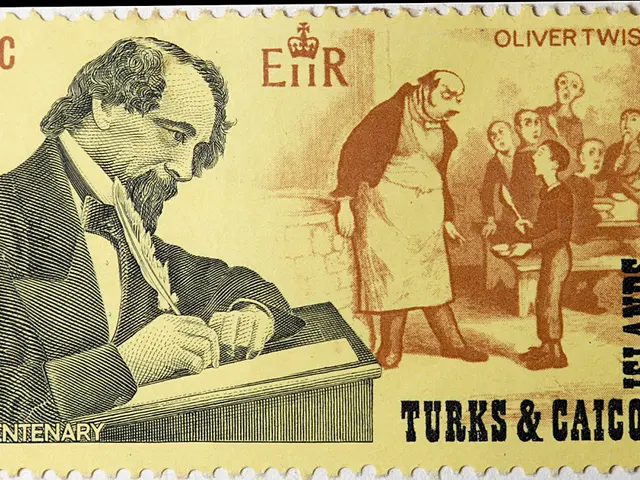Implementing Your Account-Based Marketing Plan
In the world of marketing, a strategic approach called Account-Based Marketing (ABM) is gaining traction. This strategy targets high-value prospects, aiming to focus marketing and sales teams' resources on closing profitable accounts.
The Ideal Customer Profile (ICP) is a crucial component of ABM, serving as a detailed description of the target account. Criteria for account selection include unique and measurable characteristics, such as industry vertical, business size, annual revenue, geographic location, product/service fit, decision-making structure, previous interactions, and buying signals.
Key roles in an ABM team include operations manager, sales manager, sales director, marketing manager, graphic designers, copywriters, analytics specialists, salespeople, and customer success manager. It's essential to pick members who are experienced in handling high-value accounts.
The Lifetime Value (LTV) of a target account is the amount of revenue expected to be earned from them. Understanding the LTV is vital for making informed decisions about resource allocation and return on investment.
ABM requires a strategic approach, including identifying the right target accounts, using the ideal content types, tracking the right metrics, and implementing the best techniques by unifying sales and marketing teams. Data sources for plucking out potential target accounts include CRM platforms, website audience analytics, social media reports, third-party B2B lead providers, customer survey and feedback data, internal sales data, and lookalike customers.
Personalized ABM content should be injected into website content, landing pages, social media interactions, retargeted ads, and sales offers. The content should be relevant, actionable, and tailored to the target account's current needs. Emails should be personalized beyond automated personalization and refer to recent events, interactions, and trends.
The Target Accounts List (TAL) is the list of potential companies or customers to target in an ABM campaign. The TAL is segmented and prioritized into Account Tiers based on potential sales revenue. Tier 1 accounts receive 1:1 interactions, direct social media interactions, and invitations to physical events, while Tier 3 accounts can remain in the broader marketing funnel until they show signals of moving up a level.
Communication and collaboration strategies for ABM are essential to facilitate information sharing and streamline reporting among the ABM team members. Tools like Slack, Asana, Microsoft Teams, and Monday.com can help with this.
The end goal of any ABM strategy is to close everyone in the TAL, but it's important to define specific objectives throughout the campaign. Setting clear campaign objectives will help bring marketing and sales teams together and help benchmark the effectiveness and performance of ABM strategies.
For those embarking on an ABM journey, a comprehensive solution like HubSpot ABM Software can help run successful campaigns. Additionally, connecting with an expert content strategist from ClearVoice can help create the perfect content plan for your ABM campaign.
By understanding the needs, pain points, and goals of target accounts, businesses can craft a unique value proposition and increase their chances of success with ABM.
Read also:
- Peptide YY (PYY): Exploring its Role in Appetite Suppression, Intestinal Health, and Cognitive Links
- Toddler Health: Rotavirus Signs, Origins, and Potential Complications
- Digestive issues and heart discomfort: Root causes and associated health conditions
- House Infernos: Deadly Hazards Surpassing the Flames








